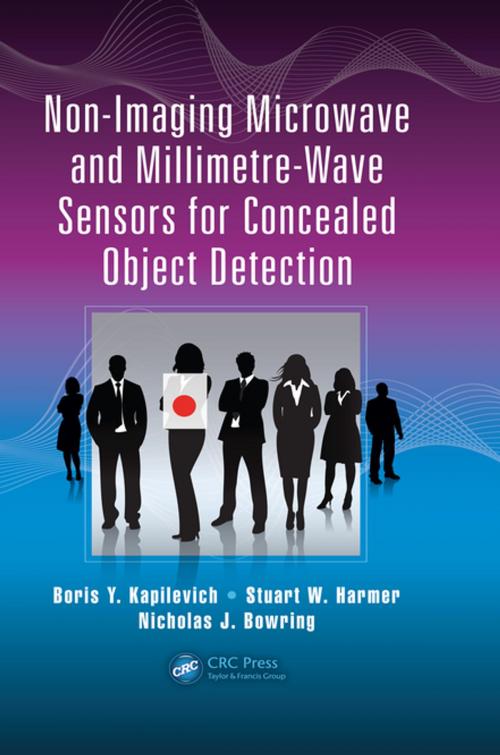Non-Imaging Microwave and Millimetre-Wave Sensors for Concealed Object Detection
Nonfiction, Science & Nature, Technology, Microwaves, Electricity, Social & Cultural Studies, Political Science| Author: | Boris Y. Kapilevich, Stuart W. Harmer, Nicholas J. Bowring | ISBN: | 9781351831826 |
| Publisher: | CRC Press | Publication: | December 19, 2017 |
| Imprint: | CRC Press | Language: | English |
| Author: | Boris Y. Kapilevich, Stuart W. Harmer, Nicholas J. Bowring |
| ISBN: | 9781351831826 |
| Publisher: | CRC Press |
| Publication: | December 19, 2017 |
| Imprint: | CRC Press |
| Language: | English |
In response to the ever-increasing global threat of terrorist attacks, the personal screening industry has been growing at a rapid rate. Many methods have been developed for detecting concealed weapons and explosives on the human body. In this important new book, the authors discuss their experiences over the last decade designing and testing microwave and millimetre wave detection and screening systems. It includes examples of actual devices that they have built and tested, along with test results that were obtained in realistic scenarios.
The book focuses on the development of non-imaging detection systems, which are similar to radar. These systems do not form a conventional image of the scene and the person(s) being screened. Instead, the sensors detect and analyze the effect that the body, and any concealed objects, has on a transmitted waveform. These systems allow remote detection of both metallic and dielectric devices concealed on the human body in both indoor and outdoor environments.
The book discusses a number of sensor types, including active millimetre wave sensors using the direct detection and the heterodyne approach, active microwave sensors for CNR-based object detection, passive millimetre wave sensors, and the role of shielding effects in operating non-imaging MM-wave sensors.
The goal of this book is to systemize the test results obtained by the authors, helping specialists to develop improved screening systems in the future. Another goal is to show how the use of non-imaging systems can reduce the cost of the screening process.
In response to the ever-increasing global threat of terrorist attacks, the personal screening industry has been growing at a rapid rate. Many methods have been developed for detecting concealed weapons and explosives on the human body. In this important new book, the authors discuss their experiences over the last decade designing and testing microwave and millimetre wave detection and screening systems. It includes examples of actual devices that they have built and tested, along with test results that were obtained in realistic scenarios.
The book focuses on the development of non-imaging detection systems, which are similar to radar. These systems do not form a conventional image of the scene and the person(s) being screened. Instead, the sensors detect and analyze the effect that the body, and any concealed objects, has on a transmitted waveform. These systems allow remote detection of both metallic and dielectric devices concealed on the human body in both indoor and outdoor environments.
The book discusses a number of sensor types, including active millimetre wave sensors using the direct detection and the heterodyne approach, active microwave sensors for CNR-based object detection, passive millimetre wave sensors, and the role of shielding effects in operating non-imaging MM-wave sensors.
The goal of this book is to systemize the test results obtained by the authors, helping specialists to develop improved screening systems in the future. Another goal is to show how the use of non-imaging systems can reduce the cost of the screening process.















